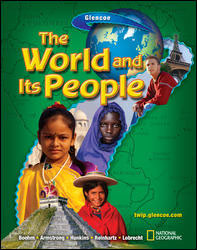
The World and Its PeopleChapter 14: Russia's Landscape and HistoryChapter OverviewsStretching across two continents—Europe and Asia—Russia is the world's largest country in land area. The Ural Mountains are the dividing line between Europe and Asia. Russia's gigantic size and harsh climates make transportation difficult within the country. Siberia is the name of the huge Asian part of Russia that lies east of the Urals. In the north is tundra, and south of the tundra is the world's largest forest—the taiga. Modern Russians descend from early groups of Slavs who settled along the rivers of what are today Ukraine and Russia. Following a period of conquest by the Mongols, a series of Russian rulers began to expand their control over the land we now know as Russia. These emperors, called czars, ruled Russia from 1480 to 1917. In 1917 Vladimir Lenin led the Russian Revolution and set up a communist-style state, which later became known as the Soviet Union. The Soviet Union collapsed in 1991 and Russia again became an independent country. |  |















